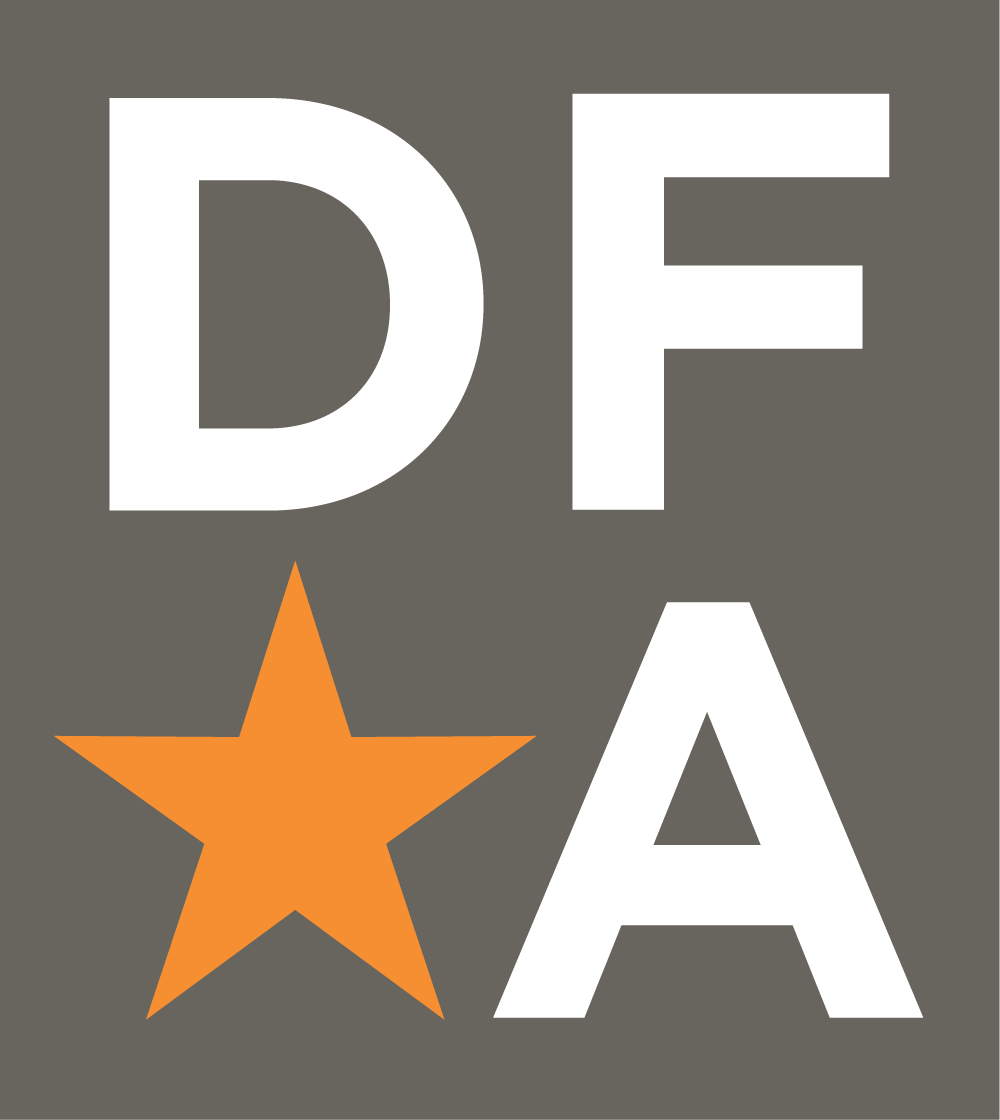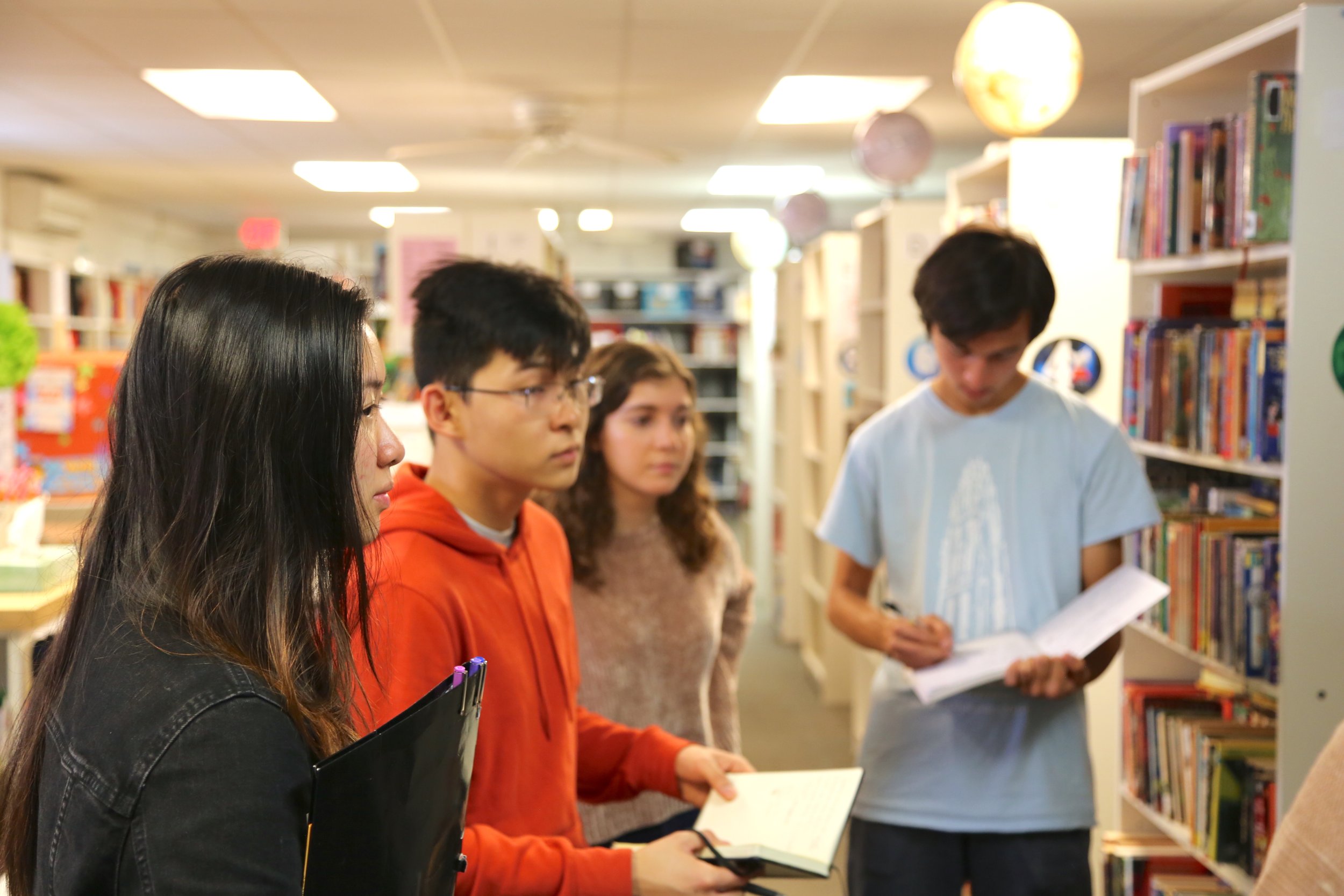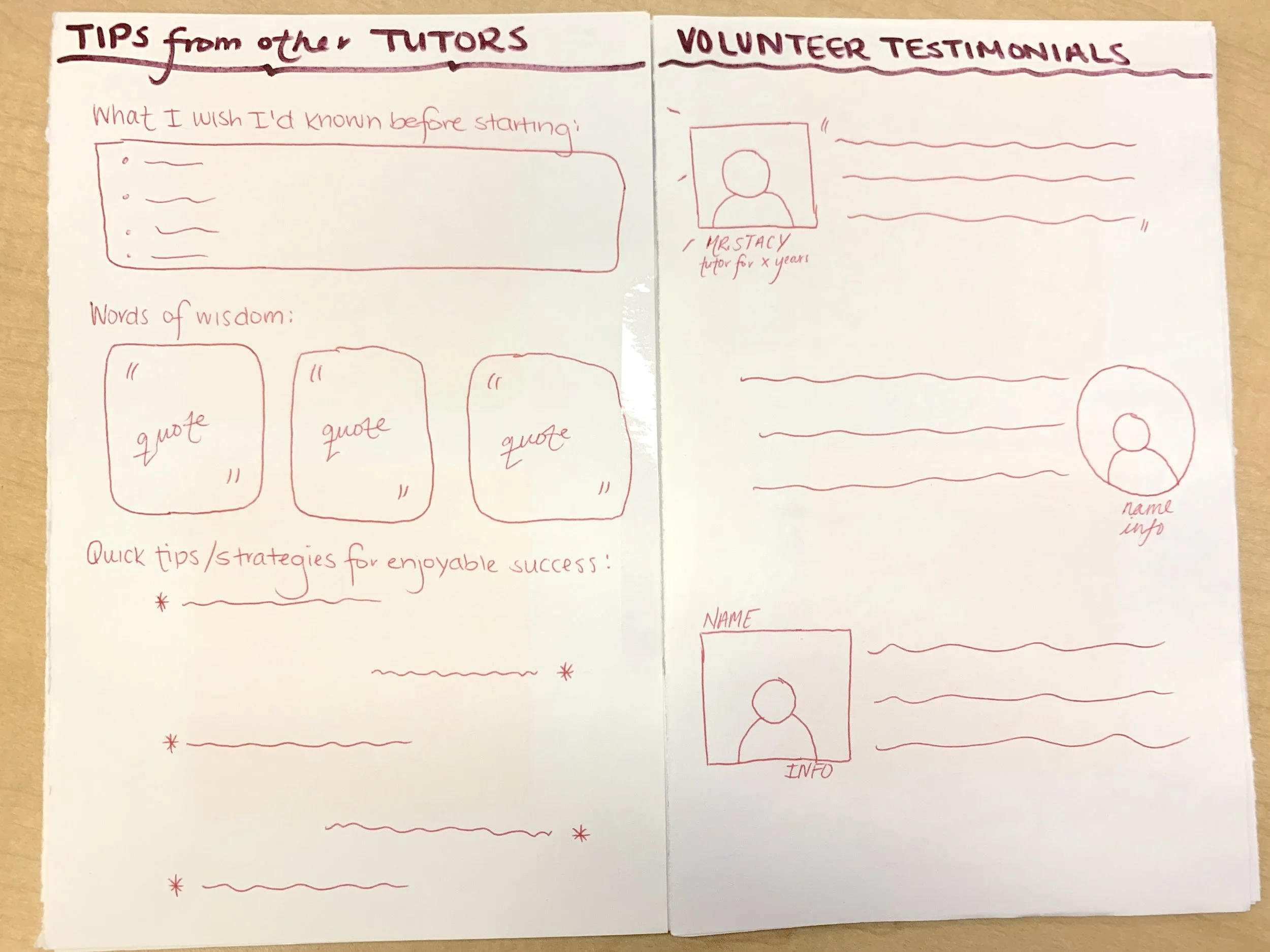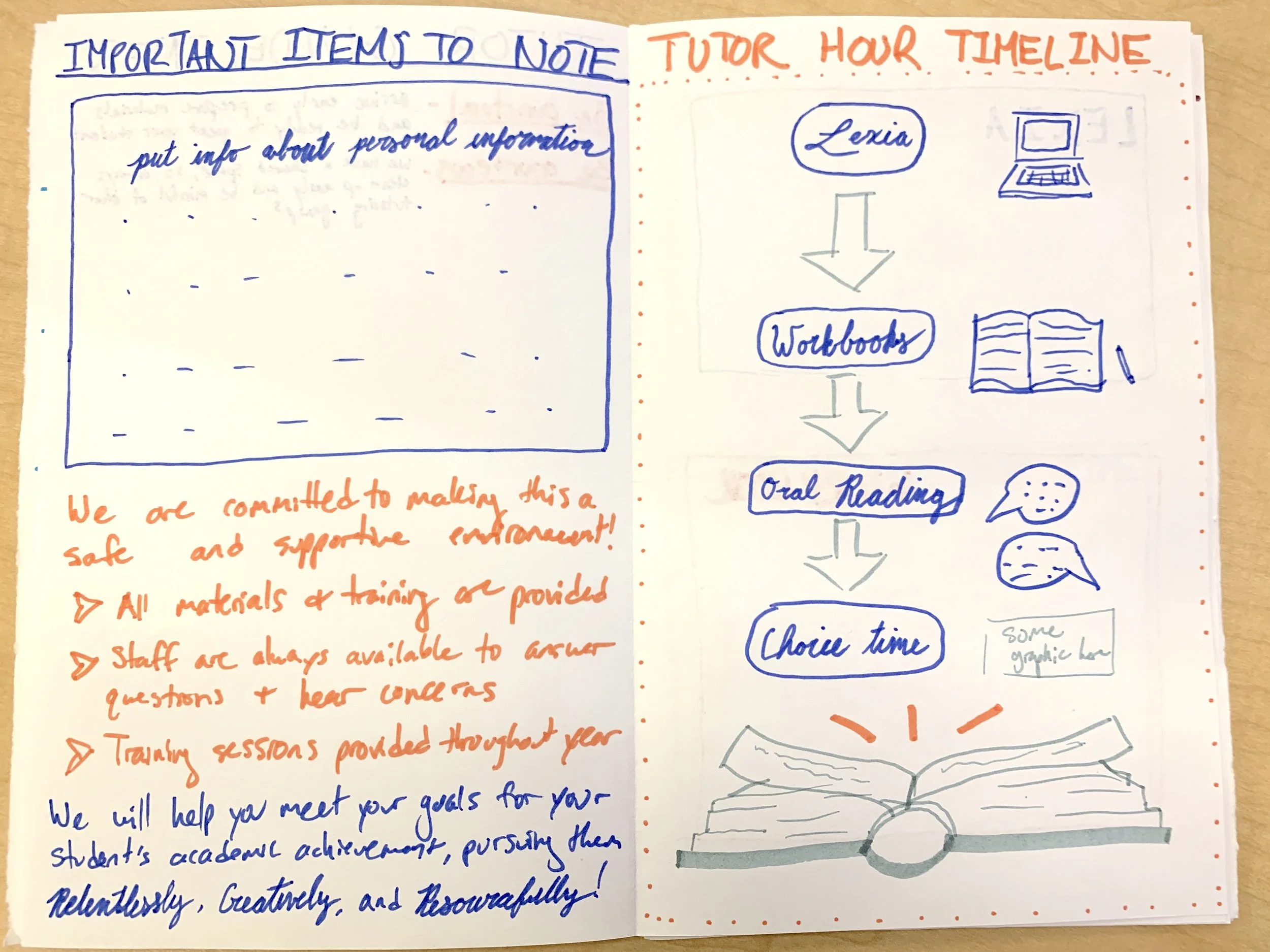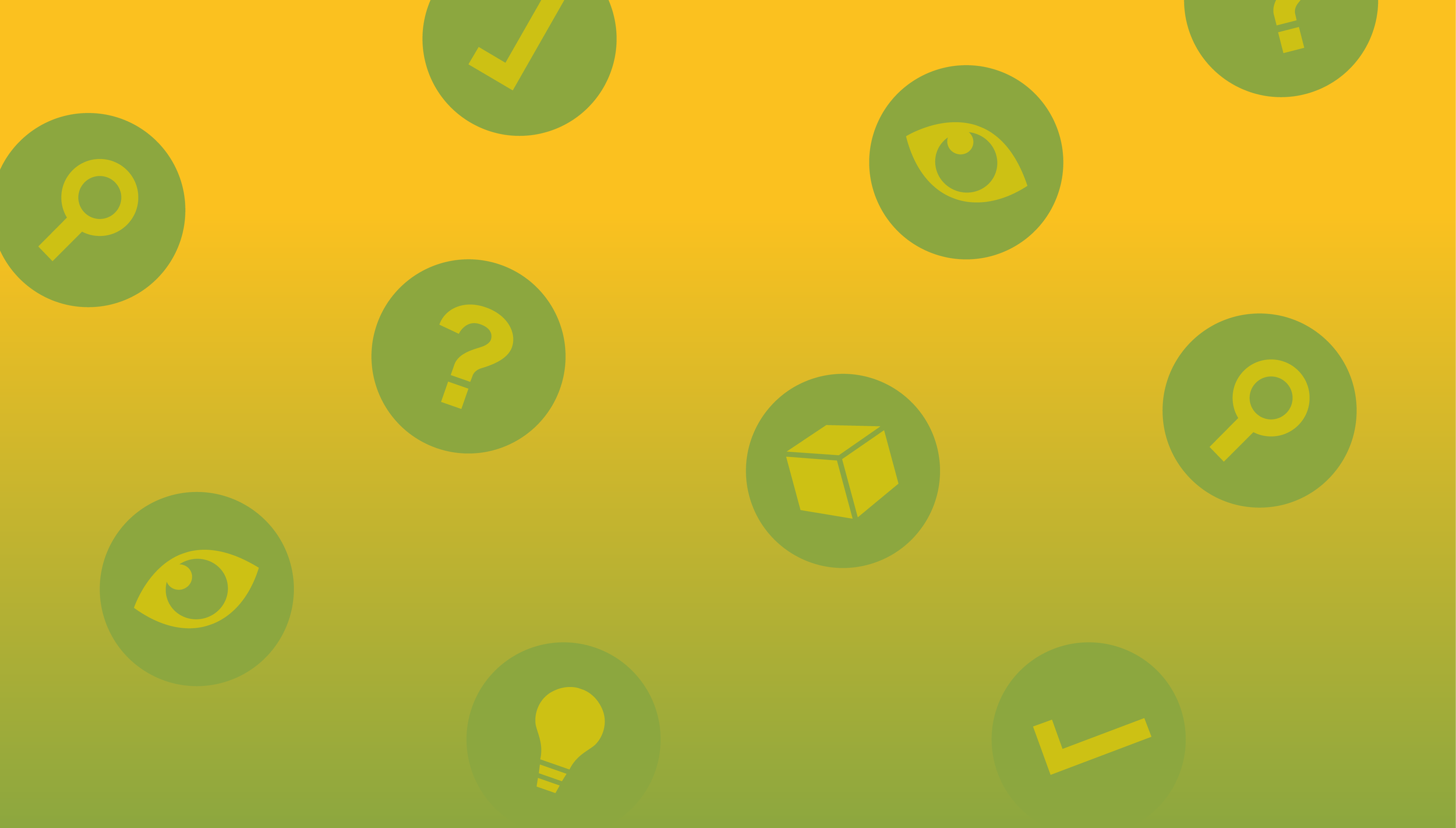
New Haven Reads
DFA Yale | 2019–2020
DFA Yale Team
How can we increase access to the overflow of books available at New Haven Reads book bank?
Community Partner: New Haven Reads
DFA Yale partnered with New Haven Reads, a non-profit creating one-on-one tutoring program and expansive book bank for all ages. The literacy tutoring program has a success rate of 98% and is made up of over 550 students and 385 volunteers. The book bank distributes over 100k books per year through events such as school field trips and teacher open houses.
The Challenge at Hand
Finding Targeted Problem Spaces
DFA Yale identified multiple opportunities within New Haven Reads. Potential project spaces included the quality and sustainability of the volunteer program, accessibility and book distribution of the book bank, and curriculum for tutoring.
The studio began to ask…
How can we increase the overflow of books available at New Haven Reads’ book bank? How can we create a more sustainable volunteer program?
Learning from the Community
Site Visit + Interviews
The team immersed themselves in initial research with a site visit to New Haven Reads, conducting interviews of current and prospective volunteers. Current volunteers stressed the value of the impacts being made and were emphasizing issues with recruiting and retaining volunteers.
Insight: They found that potential volunteers supported the program’s goals but didn’t know much about NHR and were concerned with the time commitment proposed.
Incorporating Community Perspectives
Reframing the Challenge
Insights from the interviews helped the team reframe design goals and measures of success for the project, shifting their core focus to enriching volunteer-student relationships and improving recruitment specifically for working adults who are more dedicated to the time commitment.
From this: How can we ensure the volunteer program cultivates a lasting, deep connection between students and volunteers that exceeds a superficiality of a purely academic relationship?
To this:
How can we enrich and deepen relationships between volunteers & their students?
From this: How can we increase awareness of New Haven Reads & its spectrum of volunteer opportunities among the educational community?
To this:
How can we motivate the working adult demographic in the greater New Haven community to volunteer at NHR?
Brainstorming Possibilities
Ideating Solutions
Next steps were to ideate solutions to meet the needs and challenges they’ve identified. The ideation process helped narrow their focus to 4 main ideas: flyer kit, volunteer kit, multimedia content, and event content.
Creating for the Challenge
Prototyping Various Solutions
The team split into two project teams to build and prototype different versions of merch and handbook. The Merch team created a community tip board, stickers, jars and tokens, and a tote bag. The Volunteer Handbook would be meant to be distributed to current & new volunteers that contains all relevant information about the volunteer program.
Design Goal: The merch had to be relevant to the mission, easy to give out, and low cost.
Trying It Out
User Testing
After receiving rounds of feedback from user testing with various lo-fi prototypes, the team settled on a visual identity that was warm, inviting, and easy to read. The handbook would be used as a living document so that the tutors have a reason to leave.
Reflecting on the Process
Learnings and Takeaways
When asked about reflecting on the design process of this project, the teams really enjoyed watching individual teammates come together to talk about their weekly progress. The hardest part of the process was working remotely, figuring out costs, and coordinating with team members different schedules. They learned the importance of iterating, how to be flexible, and valuing constant feedback and refinement.

